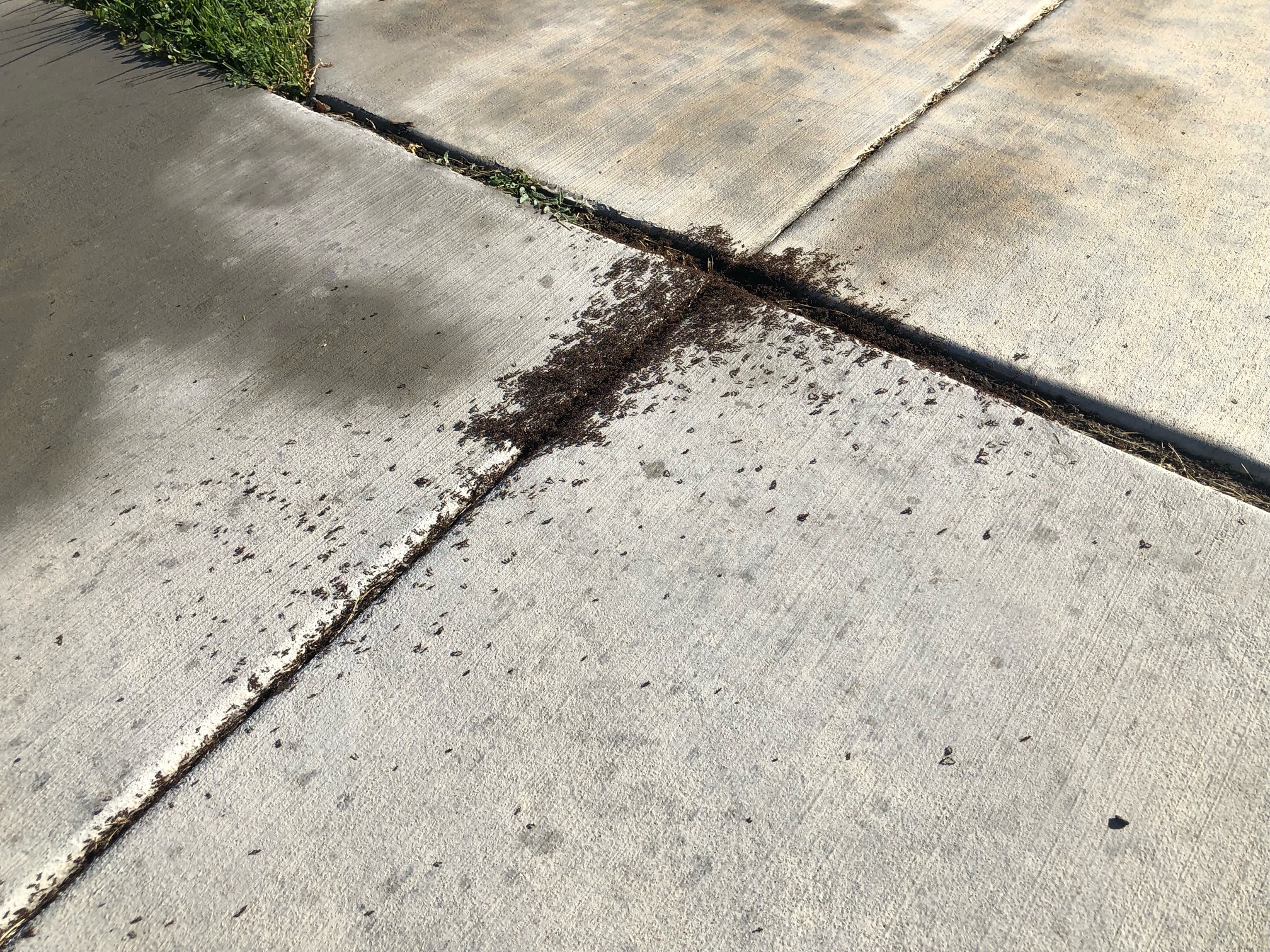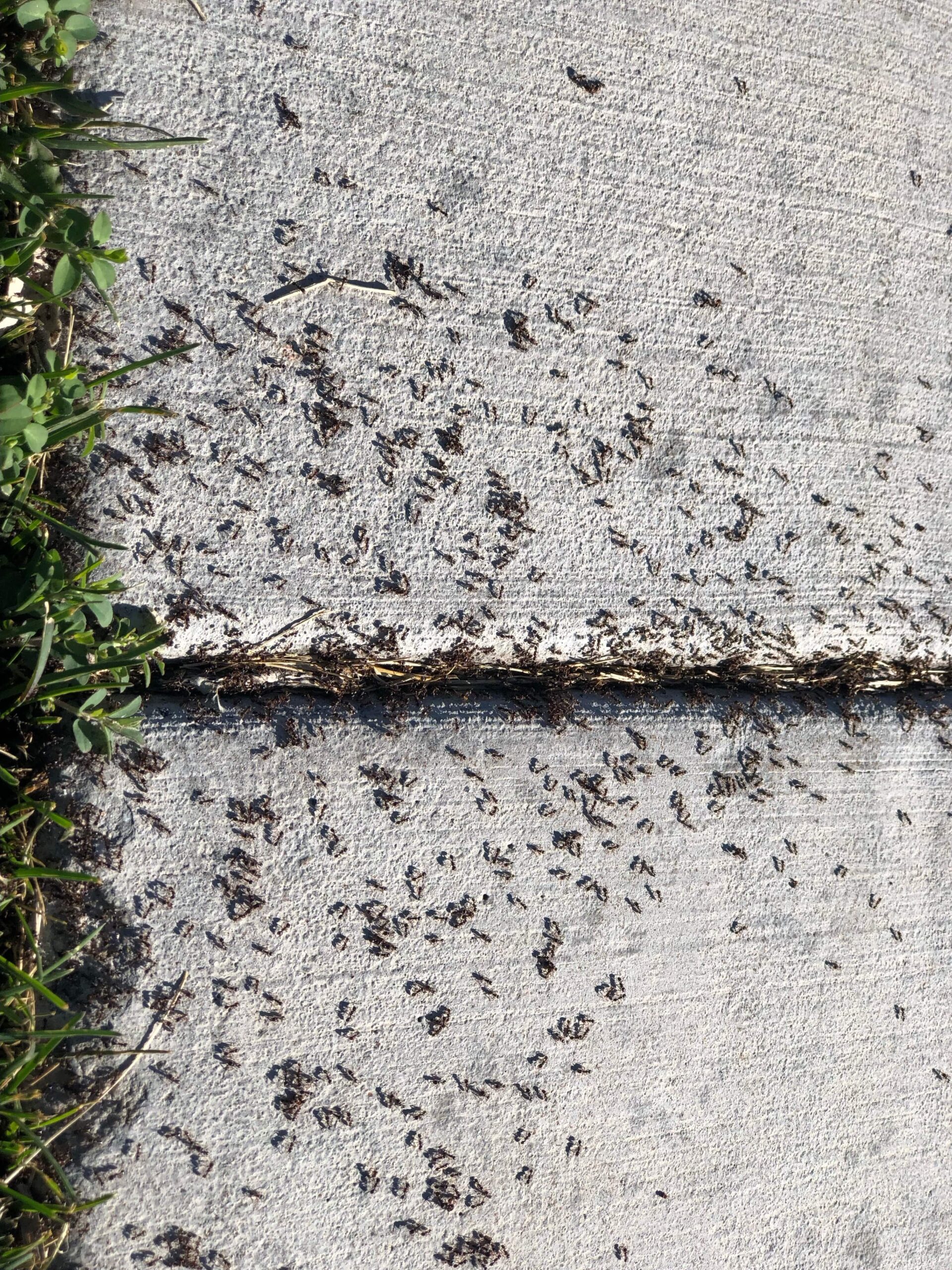
on a fennel flower (Foeniculum vulgare)
Courtesy Wikimedia, Por Davefoc – Trabajo propio, CC BY-SA 3.0, Link
| Marie and Her Yellow Jacket. Today’s story is in both Spanish and English. To hear an English version listen on Monday Morning after 7:41 am and again in the 8 o’clock hour, or online here and at UPR.org |
Hemos pasado dias de calor, en los cuales hemos podido disfrutar de rios, lagos, piscinas, pero lo que mas disfruto durante este tiempo es el poder pasearme por los senderos de este hermoso valle donde vivo.
Cache Valley tiene una forma geografica unica en el mundo, podemos salir a poca distancia de nuestras casas y encontramos belleza natural que nos atrapa y nos hace perdernos en el tiempo dentro de paisajes hermosos tales como the First Dam, the Second Dam, The Wind Caves, Stokes nature center trial, Tony grove, Bear lake entre algunos ya que me llevaria un libro completo enumerar cada sitio.
Entre cada belleza que este verano dejo es el poder vivir experiencias unicas como el avistamiento de luciernagas, la experiencia de alimentar colibries, y que las personas pueda aprender acerca de especies nativas por expertos en el tema.
Todo esto me hace recordar que vivo en un lugar magico, donde hay vida y donde todos quisieramos vivir para siempre y que el tiempo se detenga aquí.
Comienzan a caer algunas hojas, los paisajes comiezan a pintarse de colores naranja, café, dorado eso me hace recordar que viene el otoño y pronto llegara el invierno. Es tiempo de ir alistando mi pequeña casa, he trabajado recogiendo fango de las orillas del Logan river, pero no dejo de ver a todos aquellos que toman fotografias, que cantan y dicen palabras de amor, felicidad y esperanza a sus seres queridos, incluyendo a sus mascotas.
Mi familia y yo estamos casi listos para descansar y esperar que este invierno sea tan agradable como todos los anteriores y que las personas puedan disfrutarlo con sus caminatas y abrigos, con sus tablas y zapatos raros, que los niños puedan correr y deslizarce con sus caritas rojas por el frio.
Talvez te preguntes quien soy porque ya te di un par de pistas de donde vivo, mi familia y yo hemos pasado muchos años aquí cerca de ti, viendote pasar de cerca, en muchas ocasiones te he asustado y me has dado aplausos por mi buen papel.
Somos muchas las que vivimos aquí ademas tengo muy buenos vecinos como las serpientes que siempre descansan cerca de las rocas o a orillas del rio, los pajaros que vuelan cada dia para buscar sus semillas, las ardillas que atrapan su comida y corren hacia los arboles, ya sabes quien soy?
Gracias por comprender que somos importante, gracias por estudiar y aprender de mi, gracias por regalarme hoteles fansy para poder vivir y pasar tiempo.
Aunque siempre me gusta construir mi casa de barro, la que nos protege de lluvia y nieve.
Soy yo esa pequeña amiga tuya, esa que ayuda a polinizar, siempre tengo una chaqueta amarilla por si me agarra el mal clima fuera de casa. Si esa soy Marie the yellow jacket wasp.
Recuerda que nuestro lugar magico esta aquí, vivimos en comunion unos con otros y que esto exista para siempre depende de nosotros, ayudame a que nuestro lugar de paz y tranquilidad sea para muchas de nuestras generaciones.
Soy Carlos Ramos y estoy loco por Utah.
Créditos:
Versión en español: Carlos Ramos, Facilities, Stokes Nature Center https://logannature.org/staff/
Imágenes: cortesía del Wikimedia Commons, Davefoc, – Own work, CC BY-SA 3.0, Link
Audio destacado: Cortesía y derechos de autor Anderson, Howe y Wakeman
Texto: Kate Hunter y Carlos Ramos, https://logannature.org/staff
Lectura adicional: Kate Hunter y Carlos Ramos, https://logannature.org/staff y Lyle Bingham, https://bridgerlandaudubon.org/
Lectura adicional
Artículos “Wild About Utah” por Kate Hunter https://wildaboututah.org/author/kate-hunter/
Artículos “Wild About Utah” por Carlos Ramos https://wildaboututah.org/author/carlos-ramos/
Western Yellowjacket drinking water, Wikimedia Commons, Katja Schulz, Author/Contributor, https://commons.wikimedia.org/wiki/File:Western_Yellowjacket_drinking_water_-_Flickr_-_treegrow.jpg
Originally posted to Flickr by treegrow at https://flickr.com/photos/86548370@N00/8137488317
Western Yellowjacket Wasp: Western Paper Wasp, Mischocyttarus flavitarsus–https://en.wikipedia.org/wiki/Mischocyttarus_flavitarsis
Yellow-legged Mud Dauber: Sceliphron caementarium, Wikimedia, https://en.wikipedia.org/wiki/Sceliphron_caementarium
Bald-faced hornet: Dolichovespula maculata, Plant Health, Extension, Utah State University, https://extension.usu.edu/planthealth/ipm/notes_nuisance/baldfaced-hornet





